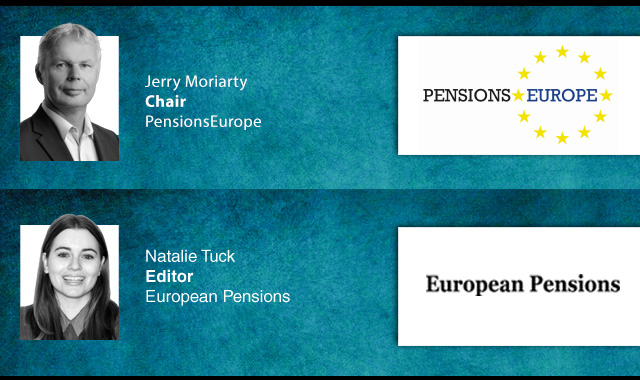In the annual Mercer Global Pension Index, which in its 2020 edition rates pension systems in 37 countries covering two thirds of the world’s population, the Danish pension system is continuously rated among the best in the world. After having come first place six years in a row between 2012 and 2017, the Danish pension system was beaten by a narrow margin in 2018 and 2019 only by the Dutch pension system. This begs the question: Why is the Danish pension system faring so well?
The bedrock of the modern Danish pension system was laid 1987, in the so called joint declaration reached between three parties, namely the government of the day, the workers unions and the employers’ organizations. An essential effect of the joint declaration was the establishment of pension schemes for a wide range of workers.
Prior to 1987, pension schemes were mainly a benefit enjoyed by workers in the public sector. From 1987 and onwards, pension schemes also became widely available to workers in the private sector. Since the early 1990s these groups have slowly increased their contributions to their pension schemes from 0.9 per cent to a minimum of 12 per cent of their salary.
Consequently, the vast majority of the Danish working population, approximately 83 per cent, automatically pays a minimum of 12 per cent of their monthly salary into a pension scheme. These pension schemes are pillar two pension products, which should be viewed as additions to the pillar one means tested public pension provisions available to the entire population over the age of 66 years.
The Danish pension system accordingly benefits from a substantial level of saving, which covers most of the population through their attachment to their workplaces. In addition to the widespread coverage among the population, the high level of saving also helps secure an adequate replacement rate for pensioners.
A main effect of this is low level poverty among pensioners. In addition, the level of pension payout among pensioners does not vary to a great extent. If we consider the difference in the level of pension payouts on the basis of the Gini coefficient, this is at 0.24 among Danish pensioners. In comparison, the Gini coefficient for the entire population between 18 and 64 years is at 0.29.
Thus, the basic structure of the Danish pension system secures essential economic and societal benefits such as a high level of saving, widespread saving on part of the vast majority of the population, adequate replacement rates and low inequality among pensioners.
The Danish pension system also benefits from the substantial effort of the sector to produce measures that enables openness and transparency, which in turn creates trust in the system among consumers.
For example, the Danish pension sector has introduced a number of online consumer tools, which helps consumers get a good overview of their pension savings and to compare their own pension products with those offered by other pension companies.
Pensionsinfo.dk (www.pensionsinfo.dk also available in English) enables consumers to get a complete overview of their pension savings, by adding up data from one or more pension companies, banks and public benefits, and giving projections of how much the consumer is likely to receive on a yearly basis upon retirement.
Another online consumer tool that helps bring about openness and transparency is www.faktaompension.dk (Facts about pensions), which enables the consumer to compare different pension companies and products on a number of variables, e.g. the yearly rate of return and yearly administration costs.
Recently, the Danish pension sector has gone through a shift away from guarantee products to non-guaranteed pension products. The Danish pension companies have developed the new products to be able to provide consumers with the best possible pensions in a situation with low interest rates and changed regulations (risk-based solvency requirement). The non-guaranteed products allow for more investment risk and thus achieve a higher than expected return for the customers. While introducing these new products, the Danish pension sector has simultaneously introduced a number of new consumer initiatives that seek to continue the tradition of openness and transparency.
One consumer initiative shows pension projections with information on risk. The rationale is that the consumer must have information regarding both the expected pension payments and the uncertainty of the expected payment. This is done by not only showing the expected payment, but also a higher and lower payment. The pension that the customer will actually end up receiving will, with great probability (90 per cent), fall between the high and low payment.
Another consumer initiative ensures consistent risk labelling of market return products across all pension companies. Common requirements have been established concerning how much short-term risk there can be in the pension schemes designated as ‘high’, ‘medium’ and ‘low’ risk, or similar.
To sum up, the Danish pension system continues to score highly on the annual global Mercer index for a number of reasons, as pinpointed above. A high score on the Mercer index is not only a great thing to achieve on its own. A well-functioning pension system also helps bring about greater national financial stability and consumer trust, which are by-products that the Danish pension sector is proud to help bring about.
Latest News
-
Pension reforms could boost productive investment in EU; private pension systems remain 'underdeveloped'
-
Chesnara agrees £260m HSBC Life acquisition
-
Danish companies collaborate to improve senior workforce
-
Danish men prioritise future finances more than women in their education choices
-
KPA Pension acquires rental homes for SEK 822m
-
Iceland’s LV publishes first report on negative impact of its investments in line with SFDR
Podcast: Stepping up to the challenge

In the latest European Pensions podcast, Natalie Tuck talks to PensionsEurope chair, Jerry Moriarty, about his new role and the European pension policy agenda
Podcast: The benefits of private equity in pension fund portfolios

The outbreak of the Covid-19 pandemic, in which stock markets have seen increased volatility, combined with global low interest rates has led to alternative asset classes rising in popularity. Private equity is one of the top runners in this category, and for good reason.
In this podcast, Munich Private Equity Partners Managing Director, Christopher Bär, chats to European Pensions Editor, Natalie Tuck, about the benefits private equity investments can bring to pension fund portfolios and the best approach to take.
In this podcast, Munich Private Equity Partners Managing Director, Christopher Bär, chats to European Pensions Editor, Natalie Tuck, about the benefits private equity investments can bring to pension fund portfolios and the best approach to take.
Mitigating risk
BNP Paribas Asset Management’s head of pension solutions, Julien Halfon, discusses equity hedging with Laura Blows
© 2019 Perspective Publishing Privacy & Cookies








Recent Stories